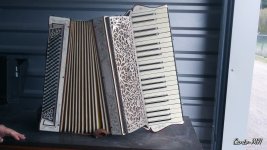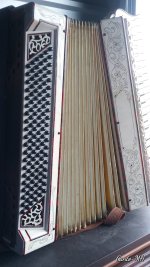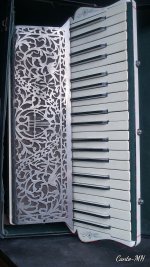-
-
We're having a little contest, running until 15th May. Please feel free to enter - see the thread in the "I Did That" section of the forum. Don't be shy, have a go!
Newbie here, need help identifying my accordion.
- Thread starter cantomagica
- Start date



